Conference Schedule
Wednesday, March 3rd
All times are posted in Pacific Time
8:30 AM – 8:40 AM
Welcome and Introductions
8:40 AM -9:10 AM (30 mins)
Tech and Non-Tech Approaches to Training Perception & Cognition in Elite Soccer
Adam Beavan, Hoffenheim FC (Heidelberg); Kevin McGreskin, Forfar Farmington FC; moderated by Leonard Zaichkowsky

Organization: TSG ResearchLab
Adam Beavan conducted his Ph.D. in cooperation with the German Football Association (DFB) and TSG 1899 Hoffenheim on investigating and developing the latest technology that best measures and trains athletes’ perceptual and cognitive abilities. Adam now continues to develop this line of research as a scientific researcher for the TSG ResearchLab.
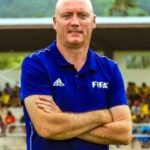
Organization: Forfar Farmington FC
A UEFA A License soccer coach with senior professional and men’s & women’s international team coaching experience. The founder of Soccer eyeQ, a specialist soccer performance coaching company, and has been presenting on vision & awareness and developing cognitive performance on the Irish FA’s UEFA License courses for the past 12 years.
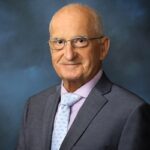
Organization: gameSense sports
Dr. Zaichkowsky is a widely known sport and performance scientist whose specialty is the psychophysiology of human performance and cognitive fitness. For 37 years he was a professor at Boston University with a joint appointment in the School of Education and School of Medicine, until his retirement. Len has published over 100 peer-reviewed journal articles, 7 books including “The Playmakers Advantage, (Jeter, Publishing, 2018), and recently “The Playmakers Decisions” with Dan Peteron (2020).
Currently, Len serves on numerous scientific advisory boards and provides consultation on “athlete decision-making”.
9:10 AM -9:55 AM (45 mins)
Session – Don’t Waste Time and Wait: Using Leading KPIs for Biometrics
Phil Wagner, Sparta Science and Mark Stephenson; Coach Andrea Hudy, University of Texas
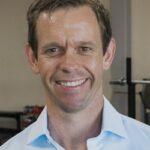
Organization: Sparta Science
Dr. Phil Wagner is the founder-CEO of Sparta Science, a physician, and a strength coach whose own athletic career as a football and rugby player was cut short by a series of avoidable training injuries. Dr. Wagner’s commitment to data-driven coaching and athlete development began as a strength coach for U.C. Berkeley and UCLA and as a professional rugby coach in New Zealand and Australia.
Frustrated by the lack of evidence-based approaches to athletic performance and injury prevention within professional sports, Phil received his medical degree from USC focused on biomechanics. Phil’s passion for protecting athlete health and longevity through injury resilience coupled with his medically-oriented human performance mindset inspired him to found Sparta Science, a movement technology and data science company focused on improving musculoskeletal health.

Organization: Tactical Sports Science Innovations, Inc.
Mark Stephenson is the President and Senior Consultant for Tactical Sports Science Innovations, inc. Mr. Stephenson has over 30 years of experience in human performance, with over 15 years in high performance and leadership programs. Mr. Stephenson works with elite organizations in both athletics and high-risk occupations as a sport and tactical scientist, consulting in the areas of performance data, selection and talent acquisition, key performance indicators, recovery, and working in high-stress environments. Mark also serves as a Tactical Scientist for WVU’s Rockefeller Neuroscience Institute. Previously, Mark spent 3 seasons with the Detroit Lions as the Director of Player Performance, and 8 years as the Human Performance Program Manager for an elite USSOCOM Special Operations unit. It was there that Mark lead a team of high-performance professionals and was responsible for the development of an all-inclusive human performance program with a mission focus on operator sustainment, human performance research science & technology initiatives, and performance enhancement.

Organization: University of Texas
Andrea Hudy enters her second season as Head Coach, Basketball Strength, and Conditioning at The University of Texas. In her role at Texas, Hudy oversees the strength and conditioning program for both the Men’s and Women’s Basketball programs. She serves as the primary sport performance coach for the Men’s Basketball team.
9:55 AM -10:30 AM (35 mins)
Break/Visit exhibits
10:30 AM -11:15 AM (45 mins)
The Future of Athletic Recovery
Dr. David Rabin, Co-Founder & Chief Innovation Officer Apollo Neuroscience and Brian McConnell, VP, NFL Alumni Association, Elite Athletics Advisor to The Board of Medicine.
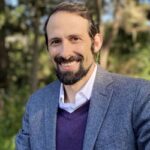
Organization: Apollo Neuro
Dr. David Rabin MD, Ph.D. is a board-certified psychiatrist, translational neuroscientist, inventor, and entrepreneur specializing in the treatment of Post-Traumatic Stress Disorder (PTSD), Depression, Anxiety, and Substance Use Disorders. Dr. Rabin has spent the last 14 years researching treatments to combat the negative effects of chronic stress on physical and mental health. Dr. Rabin received his MD in medicine and his PhD in neuroscience from Albany Medical College and trained in psychiatry at Western Psychiatric Institute & Clinic at the University of Pittsburgh Medical Center. While conducting research at the University of Pittsburgh, Dr. Rabin developed the science and technology behind Apollo, a breakthrough wearable technology that uses the neuroscience of touch and vibration to combat the negative effects of stress.
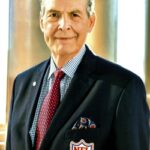
Organization: NFL Alumni Association
Mr. Brian McConnell has served as the Vice President of the NFL Alumni Association since 2010. After earning All-Big Ten Honors and graduating from Michigan State, he played professional football for several years for the Buffalo Bills, Houston Oilers, and Miami Dolphins. Following his time with the Dolphins, Mr. McConnell retired from professional football and received an MBA from Stanford.
11:15 AM -12:00 PM (45 mins)
Athlete Talent Identification
Peter Tingling, a professor at Simon Fraser University, Vancouver, and Laurence Gilman, Assistant GM, Toronto Maple Leafs.
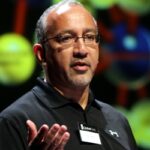
Organization: Octothorpe Software Corporation
Peter Tingling is the Associate Dean of Undergraduate Programs and an Associate Professor of Management at the Beedie School of Business where he specializes in decision making. He earned a Ph.D. (organizational and technological decision making) from the Ivey Business School at Western and an MBA from Wilfrid Laurier University. He is a Fellow of the Institute of Canadian Bankers and a Chartered Professional Accountant.
An expert on sports drafts, he is a frequent media contributor. He has been quoted in the Financial Times (London), Wall Street Journal, Financial Post, Globe and Mail, CBC Radio and Television, CTV, and the Strategic News Service where he was referred to as “far-seeing and insightful”. His “Moneyball” analytics presentation on the NHL draft with Dr. Brydon at the 2011 MIT Sloan Sports Analytics Conference was one of the top ten EOS sessions of the MIT Sloan Sports Analytics Conference.
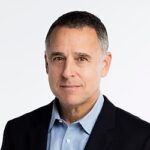
Organization: Toronto Maple Leafs
Laurence Gilman is a Canadian ice hockey executive for the Toronto Maple Leafs. Currently, he serves as an assistant general manager of the Toronto Maple Leafs in the National Hockey League and is the general manager of their American Hockey League affiliate, the Toronto Marlies.
12:00 – 12:05 PM (5 mins)
Emcee Commentary
Bill Sell, Conference Manager – A quick recap of the morning, what’s coming up next
12:05 PM -12:35 PM (30 mins)
Break/Visit exhibits
12:35 PM -1:00 PM (25 mins)
Assessing and Measuring Brain Performance
Louisa Nicola, Trained Clinical Neuroscientist, Neuro Athletics

Organization: Neuro Athletics
Louisa Nicola is a Sydney University-trained clinical neuroscientist who works one on one with the professional NBA, MLS, and NHL players to enhance peak brain performance.
1:00 PM-1:30 PM (30 mins)
Keynote: Physiology, Plasma, and Resilience to COVID-19
Dr. Michael Joyner, Caywood Professor of Anesthesiology, Mayo Clinic
Last year at the Sports Biometrics Conference Dr. Michael Joyner talked about how we finally experienced an Under 2:00 Marathon. Today we learn from someone very close to the center of the COVID-19 battle about the impact and scientific findings related to plasma with a look at how this impacts us in sport.

Organization: Mayo Clinic
Michael J. Joyner, M.D., is the Caywood Professor of Anesthesiology at the Mayo Clinic where he was named Distinguished Investigator in 2010. His research focuses on exercise physiology, human performance, blood pressure regulation, metabolism, and transfusion practices. He has been interviewed numerous times in popular print and electronic media and written on exercise and health for the New York Times, Sports Illustrated, Outside, and Runner’s World.
Dr. Joyner’s interest in athletics includes developing the original “2-hour” marathon concept in the early 1990s. On a personal level he has run a 2:25 marathon and finished 15th in his age group for the mile swim at U.S. Masters swimming nationals He is also interested in the limits of scientific reductionism and de-hyping biomedical communications. After receiving his undergraduate and medical degrees from the University of Arizona he obtained residency and fellowship training at the Mayo Clinic. The Joyner lab has been funded by NIH since 1993, and former fellows have established independent research programs at leading institutions throughout the world. Dr. Joyner has held leadership positions at Mayo, in the extramural research community, and with leading journals. He has given a number of major lectureships including the ACSM Wolffe Lecture, and APS Walter B. Cannon Lecture.
1:30 PM -2:15 PM (45 mins)
Panel discussion – Psychophysiology, Biofeedback, and Neurofeedback
Lindsay Shaw, Ed.D, US Olympic & Paralympic Committee and Len Zaichkowsky, Ph.D. Professor Boston University (retired)

Organization: US Olympic Committee
Dr. Lindsay Shaw is a Senior Sport Psychophysiologist at the United States Olympic Committee. She serves as a sport psychologist and psychophysiologist meeting the performance and clinical needs of both winter and summer National Team athletes. She utilizes brain-computer interfaces, brainwave stimulation, sleep assessments, heart rate variability interventions, and other novel approaches in her work with elite athletes.

Organization: gameSense sports
Dr. Zaichkowsky is a widely known sport and performance scientist whose specialty is the psychophysiology of human performance and cognitive fitness. For 37 years he was a professor at Boston University with a joint appointment in the School of Education and School of Medicine, until his retirement. Len has published over 100 peer-reviewed journal articles, 7 books including “The Playmakers Advantage, (Jeter, Publishing, 2018), and recently “The Playmakers Decisions” with Dan Peteron (2020).
Currently, Len serves on numerous scientific advisory boards and provides consultation on “athlete decision-making”.
2:15 PM -2:30 PM (15 mins)
Break/Visit exhibits
2:30 PM -3:15 PM (45 mins)
Session – Making Sense of Training Load
Franco Imperellizzeri, University of Technology, Sydney and Vern Gambetta, Founder GAIN
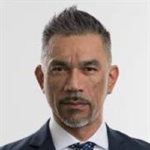
Organization: University of Technology Sydney
Professor Franco M. Impellizzeri began his career (1997) as a researcher in the private sector working as a coach, before becoming head of research at the MAPEI Sport Research Centre (Italy). This research center was created by a private company (MAPEI SpA) to take care of the athletes sponsored, including their owned Professional Cycling Team, for 9 years at the top of the International Cycling Union ranking. In those years, this center was considered among the most advanced private research center for sport in Europe. Driven by the need to find information to understand how to properly train his athletes, and not finding answers in the existing literature, Franco started conducting many rigorous studies in training and performance. Franco started as an athlete track and field, progressively moving to combat sports winning some National Championships in Italy, and becoming part of the National Team for few years. Franco has collaborated with international sport organizations and trained several elite athletes in various disciplines (including two Gold Medalists at the Olympic Games). More recently, Franco has been the fitness coach of the Swiss Fencing Team (2012 to 2016) for the preparation of the Olympic Games in Rio de Janeiro.
Professor Impellizzeri completed his Ph.D. at the University of Science and Technology in Norway, with a project on high-intensity training in soccer players. Professor Impellizzeri started collaborating with academic institutions during the period working at the MAPEI Sport Research Center and has worked as a part-time lecturer and researcher for the University of Milan and the University of Verona (CeRISM, Rovereto). In those years, Impellizzeri also received the habilitation as Associate Professor at the University of Verona.
Pursuing his interest in exploring another scientific environment, he moved in a clinical setting for 10 years (from 2007 to 2018) as Senior Research Fellow at the Schulthess Clinic in Zurich, Switzerland, where he was the Head of the Lower Limb Clinical Outcome group. Here, he developed, after a short period in the Neuromuscular Research Lab, his research on clinical outcomes and specifically in the area of clinimetrics (patient-reported outcome measures)’ He also started specializing on methodological aspects of research (by completing courses with the University of Berne, SWI, and Leeds, UK). In Zurich, Professor Impellizzeri conducted projects on injury prevention programs with studies supported by the Football Medical and Research Centre (F-MARC) of the International Federation of Association Football (FIFA).
In 2018, Professor Impellizzeri move back full time in sport, as Professor in Sport and Exercise Science and Medicine at the UTS Faculty of Health. He has publications (>170) in the area of sport science and orthopedics. He is a member of the editorial boards of various scientific journals including co-editor in chief of Science and Medicine in Football. He is a fellow of the European College of Sport Sciences and a member of the STORK (The Society for Transparency, Openness, and Replication in Kinesiology).
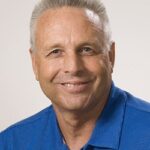
Organization: GAIN Network
Vern is the founder of the GAIN professional development network. Vern is recognized internationally as an expert in training and conditioning for sport having worked with world-class athletes and teams in a wide variety of sports. He is a popular speaker and writer on conditioning topics having lectured and conducted clinics in Canada, Japan, Egypt, Australia and Europe. Vern’s coaching experience spans 52 years at all levels of competition. His background is track & field, having coached at all levels of the sport. In addition, Vern served as the first director of the TAC Coaching Education Program, an innovative program designed to upgrade the standard of track and field coaching in the US. He has authored over 100 articles and eight books on various aspects of training. He received his BA from Fresno State University and his teaching credential with a coaching minor from the University of California Santa Barbara. Vern obtained his MA in Education with an emphasis in physical education from Stanford University.
Session Video Link – Coming Soon
3:15 PM -4:00 PM (45 mins)
Cognitive Fitness: Towards Conditioning the Mental Ingredients of Peak Performance
Prof Eugene Aidman, FAPS, FCSEP; Principal Scientist (Applied Cognition); Defence Science & Technology Group; Chair, DSTG Low-risk Research Ethics Panel. Joined by John Crampton, Chair, APS College of Sport & Exercise Psychologists.
Resources for conference delegates courtesy of the presenters:
The original “Frontiers in NeuroScience” paper that started the groundswell: https://www.frontiersin.org/articles/10.3389/fnhum.2019.00466/full
Article from the current issue of Nature:
https://www.nature.com/articles/s41598-021-83504-6
Eugene Aidman on LinkedIn:
https://www.linkedin.com/posts/eugene-aidman-8a0930a_caffeine-may-disrupt-the-impact-of-real-time-activity-6769990316687810560-_fvU
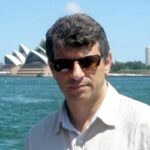
Organization: Defense Science and Technology Group
Eugene Aidman has an international track record in performance psychology, with multinational projects and highly cited publications on high-stake selection in sport, psychological drivers in doping, cognitive fitness, and fatigue countermeasures. Eugene has been a MAPS and registered psychologist for more than 26 years. He is a founding member of the APS College of Sport and Exercise Psychologists (CoSEP) and served as a member of the CoSEP National Executive between 2002 and 2016.
Eugene is an expert in new-generation psychological test development. His pioneering work in computer-game-embedded testing, non-verbal implicit attitude assessment, and simulation-embedded cognitive testing has been influential and innovative. He represented the APS as a member of the International Testing Commission (ICT) Reference Group that produced the ITC Online Testing Guidelines.
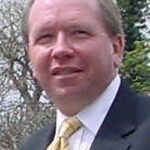
Organization: Performance Enhancement Systems
John Crampton is a registered psychologist with an AHPRA endorsement in Sport & Exercise Psychology. He owns “Performance Enhancement Systems”, a business that offers “Management & Training Services for Athletes, Coaches & Organizations” to an international client base.
PES provides organizational review & change services to high-performance organizations undergoing system & cultural change. Crampton develops & delivers mental training programs to improve athlete, coach & program performance, & provides advisory/counseling/coaching services to development & high-performance athlete programs.
John Crampton was a member of the Medical Support Group for the Australian Olympic Team at the Barcelona Olympics and was a member of the Headquarters Medical staff for the Australian Olympic Team at the Sydney Games
Crampton is extensively involved in delivering integrated playing & learning systems to amateur players through professional coaches & tournament professionals in golf. He is a contributing author to the book “Golf Excellence”. He has recently assisted the R&A, Augusta National, and the APGC in the establishment of the Asia-Pacific Championship Golf Academy.
4:00 PM -4:30 PM (30 mins)
Day’s Recap and Analysis – Day 1 wrap up
Board members recap the key discussions of the day
Thursday, March 4th
All times are posted in Pacific Time
8:30 AM -8:35 AM
Welcome and Introductions
8:35 AM -9:20 AM (45 mins)
From ChalkBoard to Virtual Reality – Reflections and Recollections
Vern Gambetta, Founder GAIN

Organization: GAIN Network
Vern is the founder of the GAIN professional development network. Vern is recognized internationally as an expert in training and conditioning for sport having worked with world-class athletes and teams in a wide variety of sports. He is a popular speaker and writer on conditioning topics having lectured and conducted clinics in Canada, Japan, Egypt, Australia and Europe. Vern’s coaching experience spans 52 years at all levels of competition. His background is track & field, having coached at all levels of the sport. In addition, Vern served as the first director of the TAC Coaching Education Program, an innovative program designed to upgrade the standard of track and field coaching in the US. He has authored over 100 articles and eight books on various aspects of training. He received his BA from Fresno State University and his teaching credential with a coaching minor from the University of California Santa Barbara. Vern obtained his MA in Education with an emphasis in physical education from Stanford University.
9:20 AM -10:05 AM (45 mins)
Utilizing a basketball analytics background to explore complex sports science questions
Phil Chang, LA Lakers & Dr. Marcus Colby, Fusion Sport
In this session, LA Lakers Senior Manager of Basketball Analytics Phil Chang discusses a few case studies regarding the optimal work-to-rest time, utilizing league-wide workload data to assist in player health decisions, and an in-depth analysis of the NBA schedule. Tune in as Phil and Fusion Sport Senior Sports Scientist Dr. Marcus Colby examine how to bridge the gap between basketball analytics and sports science.

Organization: LA Lakers
A Los Angeles native, Phil Chang has led the Basketball Analytics team at the Lakers since 2018. Prior to the Lakers, Phil worked at the NBA League Office in the Basketball Strategy & Analytics department, focusing on game/playstyle trends and potential rule changes. Phil graduated from Princeton University with a degree in Operations Research and Financial Engineering.
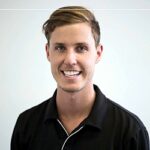
Organization: Fusion Sport
Marcus is a University of Western Australia graduate with degrees in Exercise and Health Science, and a Ph.D. investigating injury risk modeling in Australian Football. He has over 5 years of practical experience working in a sports science role with the West Coast Eagles (AFL), has lectured at the University of Western Australia, and won awards for his research contributions. As a Senior Consultant, Marcus has extensive experience implementing Fusion Sport’s Smartabase in various departments and levels of the NBA, NHL, AFL, Australian, and US Military and plays a role in the innovation and development of our platform.
10:05 AM-10:30 AM (25 mins)
Break/Visit exhibits
10:30 AM -11:15 AM (45 mins)
Athlete Cognition: Exploring the Perception and Decision Making of Playmakers
Dan Peterson, author; Dr. Peter Fadde, Southern Illinois University

Organization: Southern Illinois University
Dr. Fadde is a professor and director of the Learning Technology graduate program at Southern Illinois University. Previously, he served for 13 seasons as an athletics video coordinator at Purdue University, where he earned his masters and doctoral degrees.
Dr. Fadde originated the Expertise-Based Training (XBT) method that repurposes expertise research methods, such as video-occlusion, into expertise training methods. Dr. Fadde co-founded gameSense Sports to commercialize video-occlusion apps to train sports perception skills such as Pitch Recognition in baseball/softball pitch and serve recognition in tennis. Dr. Fadde was named SIU’s Innovator-of-the-Year in 2013 and holds a patent on computer software for tennis stroke recognition.
11:15 PM -12:00 PM (45 mins)
Is Tech Making an Impact in Sports?
Dave Hancock, Tony Strudrick, Peter Vint; moderator Vern Gambetta
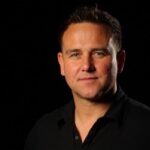
Organization: Apollov2
Dave is the founder and CEO of Apollo. His CV has taken him to be the Head Physiotherapist of Wolves FC, Leeds United Football Club, Chelsea Football Club, and the Performance Director of the New York Knicks Basketball Team. He has over 26 years of experience as a physio, strength coach and Director of Performance working at the highest level in rugby, football, and basketball. He is a certified PT both in the UK and the USA.
He is a qualified strength coach and holds two Masters degrees in Sports Exercise Medicine and Manipulation.
Dave was the first British physio to be recruited full time for seven years by an NBA franchise as a Performance Director. He has also attended the 2010 Soccer World Cup and the 2012 European Finals working for the English Senior Men’s National soccer team for five years. Dave has lectured all around the world, published many medical /scientific papers on ACL rehabilitation and sports injuries. He has also been a member of the Nike Performance Board for 5 years.
Dave brings a wealth of knowledge and experience to our conference. His years at the top of world sport has not only allowed him to be a part of a winning franchise but has enabled him to understand how data is used to make decisions, track the right information, and cut out the noise when working with world-class coaches and athletes such as Phil Jackson, Jose Mourinho, David Beckham, and Kevin Durant.
He is the only CEO in Sports Tech who has really been on both sides of the fence.
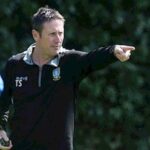
Organization: Sheffield Wednesday Football Club
Dr. Tony Strudwick is Head of Sports Science and Medicine at Sheffield Wednesday Football Club where he brings more than two decades of experience working in top-flight Football in the U.K. An internationally-renowned expert, Dr. Strudwick is at the forefront of the sports science industry.
He spent 11 years as Head of Performance at Manchester United Football Club working under Sir Alex Ferguson. In that time United won 4 Premier League titles, 3 League Cups, the FA Cup, the UEFA Champions League, and the FIFA Club World Cup. He also attended the 2014 FIFA World Cup in Brazil working for the English Senior Men’s National Team.
Educated at Loughborough University and Liverpool John Moores, where he gained a doctorate in philosophy and physiology, Dr. Strudwick went on to work for Coventry, the FA, West Ham, and Blackburn before joining Manchester United. In 2018, Dr. Strudwick was appointed as Head of Performance by Wales, working under his former Manchester United colleague, Ryan Giggs.
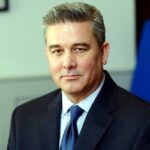
Organization: USA Volleyball
Dr. Peter Vint is the Chief of Sport at USA Volleyball where he oversees all national teams as well as the high performance and coaching education departments. A pioneer of sports science and data analytics, Dr. Vint has over 20 years of experience helping some of the world’s most successful Olympic and professional sport organizations, coaches, and athletes.
In 2016, he was appointed Academy Director at Everton Football Club, becoming the first American to hold this position in the Premier League. Prior to his appointment at Everton FC, Dr. Vint spent 10 years at the United States Olympic Committee in multiple roles, most notably USOC High-Performance Director (2009-2012) and Senior Director of Competitive Analysis, Research & Innovation (2012-2015).
Amongst many notable achievements, Dr. Vint headed up a team of leading sports science and medical professionals, in support of five national governing bodies, including USA Track and Field and USA Swimming, that went on to win 64 medals during the 2012 Olympic Games in London.

Organization: GAIN Network
Vern is the founder of the GAIN professional development network. Vern is recognized internationally as an expert in training and conditioning for sport having worked with world-class athletes and teams in a wide variety of sports. He is a popular speaker and writer on conditioning topics having lectured and conducted clinics in Canada, Japan, Egypt, Australia and Europe. Vern’s coaching experience spans 52 years at all levels of competition. His background is track & field, having coached at all levels of the sport. In addition, Vern served as the first director of the TAC Coaching Education Program, an innovative program designed to upgrade the standard of track and field coaching in the US. He has authored over 100 articles and eight books on various aspects of training. He received his BA from Fresno State University and his teaching credential with a coaching minor from the University of California Santa Barbara. Vern obtained his MA in Education with an emphasis in physical education from Stanford University.
12:00 PM -12:40 PM (40 mins)
Break/Visit exhibits
12:40 PM -1:10 PM (30 mins)
Jump Mechanics for Readiness and RTP
Dr. Matt Jordan, Director Sports Science, Canadian Sport Institute & Paul Robbins, EVP of Sports Performance KINEXON

Organization: Canadian Sport Institute Calgary
Dr. Matt Jordan has been a performance consultant and applied sport scientist working with international athletes over six Olympic Winter Games. Matt is currently the Director of Sport Science at the Canadian Sport Institute Calgary and is an Adjunct Professor in the Faculty of Kinesiology at the University of Calgary. His research focuses on neuromuscular adaptations to resistance training and ACL injury/re-injury prevention in elite athletes. Throughout his career, Matt has consulted with more than 30 Olympic and World Championship medalists, and he frequently provides his expertise to high-performance sports organizations.
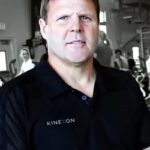
Organization: KINEXON
Paul is one of the country’s leading experts on cardiovascular programming and metabolic assessments. Currently is the EVP of Sports Performance, KINEXON. Program analysis and design based on live data tracking systems for professional teams. Working with all NBA teams and developing new models for NFL, USTA, and college sports as well as military special forces. He got his start developing performance metrics from game data in European soccer. Paul analyzes real-time training loads for each athlete, develops performance training based on energy systems demands, works with coaches on performance programming based on game data, and oversees the new wearable tech division.
Paul’s other accomplishments include:
- Sports Science Committee for the USTA Exercise Physiologist for NHL combine.
- Developed the cardio programs and VO2 assessment programs for Athletes’ Performance (now EXOS) clients include thousands of professional athletes from all leagues- NFL, NHL, NBA, MLS, MLB, and National teams from Germany, Poland, Mexico, China, and the USA.
- Cardio consultant for fitness equipment companies, specializing in program design and education.
- Designed metabolic analyzers and cardio programming and testing protocols
Session Video – Video To Come
1:10 PM-1:40 PM (30 mins)
Application of Sport Science Data in Professional Team Sport
Mark Stephenson, Senior Consultant, Tactical Sports Science Innovations, Inc.

Organization: Tactical Sports Science Innovations, Inc.
Mark Stephenson is the President and Senior Consultant for Tactical Sports Science Innovations, inc. Mr. Stephenson has over 30 years of experience in human performance, with over 15 years in high performance and leadership programs. Mr. Stephenson works with elite organizations in both athletics and high-risk occupations as a sport and tactical scientist, consulting in the areas of performance data, selection and talent acquisition, key performance indicators, recovery, and working in high-stress environments. Mark also serves as a Tactical Scientist for WVU’s Rockefeller Neuroscience Institute. Previously, Mark spent 3 seasons with the Detroit Lions as the Director of Player Performance, and 8 years as the Human Performance Program Manager for an elite USSOCOM Special Operations unit. It was there that Mark lead a team of high-performance professionals and was responsible for the development of an all-inclusive human performance program with a mission focus on operator sustainment, human performance research science & technology initiatives, and performance enhancement.
1:40 PM -2:10 PM (30 mins)
Adapting to Chaos for Peak Performance
Pauly DiTuro, Director of the BrainStorm Institute in conversation with Dr. David Rabin, CCo-Founder & Chief Innovation Officer Apollo Neuroscience
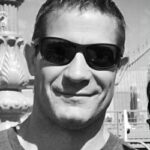
Organization: University of South Carolina
Pauly DiTuro is the Founder and Performance Director for the BrainStorm Institute at the University of South Carolina – a collaboration of neuroscientists focused on Left-of-Bang brain health and cognitive enhancement. Pauly served 14 years as a Special Forces Medical Sergeant and competed at the elite level in both rugby and boxing. He has a BS in Astrophysics and an MS in High Energy Particle Physics.

Organization: Apollo Neuro
Dr. David Rabin MD, Ph.D. is a board-certified psychiatrist, translational neuroscientist, inventor, and entrepreneur specializing in the treatment of Post-Traumatic Stress Disorder (PTSD), Depression, Anxiety, and Substance Use Disorders. Dr. Rabin has spent the last 14 years researching treatments to combat the negative effects of chronic stress on physical and mental health. Dr. Rabin received his MD in medicine and his PhD in neuroscience from Albany Medical College and trained in psychiatry at Western Psychiatric Institute & Clinic at the University of Pittsburgh Medical Center. While conducting research at the University of Pittsburgh, Dr. Rabin developed the science and technology behind Apollo, a breakthrough wearable technology that uses the neuroscience of touch and vibration to combat the negative effects of stress.
2:10 PM -2:40 PM (30 mins)
Closing Keynote: Sport Technology Response to COVID19: Insights from the NBA
Dr. David T. Martin, Chief Scientist, Director of Performance, APEIRON Life; Honorary Professor of Australian Catholic University; Former Director of Performance Research & Development (2015-2019) – Philadelphia 76ers and Scott Epsley is an Australia-trained Sports Physical Therapist and the former Medical Director for the Philadelphia 76ers. An additional presenter is Philipp Lienemann, Project Manager & Sports Scientist for Kinexon.
In response to the COVID19 pandemic, many Sport Technology companies made revisions in order to make a positive contribution to early illness detection and containment. This session will review how a few companies addressed the COVID19 pandemic and then review how the NBA used technology to help make the 2020 NBA Playoffs in the “bubble” as safe as possible.
TECHNOLOGY – A large scale COVID19 study conducted by the University of California, San Francisco (UCSF) reported that the Oura Ring temperature monitor could represent an effective tool for detecting fever and may facilitate early detector of illness. Apple has now introduced their Series 6 watch which includes a blood oxygen sensor. Apple has announced that they are partnering with researchers conducting the Seattle Flu Study and faculty form the University of Washington School of Medicine to better understand how frequent blood oxygenation monitoring may give insight into early detection of COVID19 and influenza. The US Army is now funding a study headed up by Elysian Labs to examine the efficacy of Polar wearables for early detection of COVID19.
Kinexon, known for using RFID technology to accurately track players during training and competition quickly pivoted their product offering to developed SafeZone, “… the first digital solution to protect employees and business operations during the COVID-19 pandemic.” Recently, IQVIA epidemiologist and University of North Carolina faculty Dr. Christina Mack published a scientific paper in partnership with the NFL, NFLPA and CDC showing effectiveness of the NFL 2020 Season COVID-19 protocols and explaining the role of KINEXON within contact tracing processes.
NBA BUBBLE – The primary objectives for those keeping the “NBA Bubble” safe was 1) prevent entry of COVID19 and 2) facilitate early detection and containment of COVID19. Players underwent a rigorous testing and quarantine prior to entering into the NBA Bubble. Each morning players would fill out a health questionnaire and then use a smart thermometer (Kinsa) to measure oral temperature and a pulse oximeter (Masimo) to identify blood oxygenation values. All data were connected to a larger confidential database. Fusion Sport created a modified version of its Smartabase athlete management system which connected with the NBA MyHealth app. Oura Rings were made available to any athletes and staff that wanted one and produced a risk score to provide insights. Frequent COVID19 saliva-based tests were implemented based on NBA funded Yale research. A physical distance monitor was used to remind players and staff to stay 6ft apart and of course wearing masks were mandatory.

Organization: APEIRON Life
Dr. David T. Martin has accumulated 35 years of experience working with Olympic and Professional Athletes and is widely recognized as an innovator in high-performance sport. Dr. Martin is also an accomplished applied sport scientist with more than 110 peer-reviewed publications investigating topics such as talent identification, demands of competition, fatigue management, competition analysis, altitude training, and thermoregulation.
Additionally, Dr. Martin has worked with numerous world-class coaches across different sports, including cycling, skiing, and basketball. At the Australian Institute of Sport, Dr. Martin was a Senior Physiologist, a National Sport Science Coordinator for Cycling, a project leader for Cycling and Skeleton Talent Identification Projects, and a Director of Performance for the AIS Combat Center, an initiative designed to raise international competitiveness in four Australian Olympic combat sports.
While Dr. Martin was the National Sport Science Coordinator for Cycling Australia the Olympic athletes won eight Gold, eight Silver and 12 Bronze medals. Dr. Martin has also worked with Australian World Record holders, World Champions and Australia’s only winner of the Tour de France and presents findings from his research at international scientific meetings. Dr. Martin recently worked in the NBA where he served as the Director for Performance Research and Development for the Philadelphia 76ers (2015-2019) and is currently an Honorary Professor at the Australia Catholic University as well as the Chief Scientist and Performance Director for Apeiron Life, a Bay Area Performance Health Science start-up company.
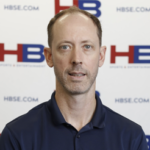
Scott graduated from the University of Queensland in 1998 with a Physiotherapy degree. He has also completed a Level 3 Sports Physiotherapy certificate that includes training at the Australian Institute of Sport and has a Post Graduate Certificate in Sports Physiotherapy from LaTrobe University. Prior to working in the NBA Scott moved to the USA and led the Georgetown University sports medicine program for more than 10 years.
Scott has helped rehabilitate and enhance the performance of athletes in both Australia and the USA including many Olympians, professionals, and amateurs, and has worked at international sporting events such as the Goodwill Games and Commonwealth Games. He has also represented Australia as a Physiotherapist to the Australian Junior Women’s Field Hockey team and served as a consultant for the Australian Women’s Olympic field hockey team, and Queensland Academy of Sport. He was an Adjunct Senior Lecturer in the University of Queensland School of Medicine for five years, lecturing medical students in musculoskeletal examination.
Scott’s research interests include Medial Tibial Stress Syndrome (MTSS) for which he has lectured internationally and presented at numerous sports medicine conferences, as well as having produced a report on Shin Pain in Elite Female Hockey Players for the Australian Sports Commission. Other areas of research involvement include using Discursive Psychology to examine the construct of pain in the consultation, and most recently the use of ultrasound imaging in the diagnosis of hip pain in athletes.
Scott currently lectures throughout the USA on the use of Real-Time Ultrasound Imaging for Physical Therapists, focusing on motor control strategies and ultrasound biofeedback as a re-learning tool.

Organization: KINEXON
Philipp is responsible for all project-related activities at KINEXON with a special focus on consulting with clients on sports science best practices. Philipp is currently working with over 40 clients across North America & Asia incl. teams in the NBA, G-League, NFL, NHL, AHL, NCAA, Japanese B-League. He is developing innovative concepts & protocols for performance enhancement and consulting key internal & external stakeholders on the integration of sport science & technology best practices in a high-performance sports ecosystem. With his experience in the field, Philipp is also responsible for multiple product innovation & development initiatives.
Prior to working with KINEXON, Philipp served as Head and Assistant Coach for various teams in the Youth High-Performance Program at FC Bayern Munich Basketball. Additionally, Philipp has worked for the Bavarian Basketball Federation as Head Coach for the regional talent identification & development program as well as a lecturer for the federation’s state-wide coaching education & licensing program.
Philipp graduated from Technical University Munich (TUM, Germany) with a Bachelor of Science in Sport & Exercise Science and Master of Science in Diagnostic & Training.
2:40 PM -2:55 PM (15 mins)
Conference Recap and Analysis – Day 2 wrap up
Board members recap the key discussions of the day


